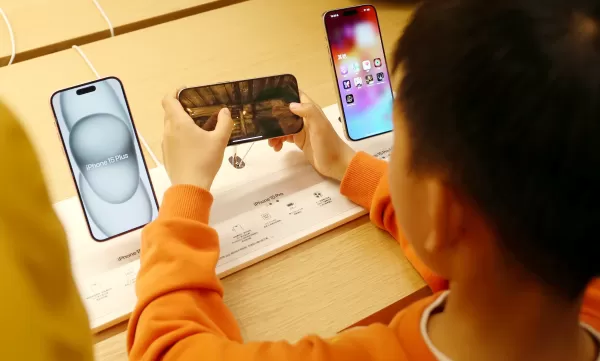On Wednesday morning, Apple unveiled the iPhone 16e, now the most budget-friendly model in their current lineup. This new addition essentially takes over from the 2022 iPhone SE as the "affordable" choice, though it represents a departure from the steep discount that characterized the earlier SE models. Priced at $599, the iPhone 16e narrows the gap with the $799 iPhone 16 released last fall. Pre-orders begin on Friday, February 21, with the official release following on Friday, February 28.
The iPhone 16e marks a milestone as the first device to incorporate Apple's C1 cellular modem. Apple has seen success with its proprietary chips, including the M1 and subsequent models in its computers and the A-series in mobile devices. The cellular modem, though often overlooked, is crucial for phone performance, and any shortcomings with the C1 could lead to connectivity issues. Apple's past experience with the "Antennagate" scandal, where the iPhone 4 faced signal strength problems due to antenna design, hopefully taught them valuable lessons to ensure the iPhone 16e's connectivity is robust.
iPhone 16e

 4 Images
4 Images

From the front, distinguishing the iPhone 16e from the iPhone 14 can be challenging. The display specifications are identical, featuring a 6.1-inch OLED panel with a 2532x1170 resolution and a peak brightness of 1,200 nits. While not as sharp or bright as the iPhone 16, the iPhone 16e includes the Action button and a USB-C port but lacks the Camera Control feature.
The back of the iPhone 16e sets it apart from other models with its single camera setup, reminiscent of the iPhone SE. It boasts a 48MP sensor similar to the iPhone 16's main camera, though certain features like sensor-shift stabilization, the latest Photographic styles, and adjustable focus in portrait mode are reserved for the higher-end model. The front-facing camera remains the same and supports Face ID.
The iPhone 16e's construction includes an aluminum frame, a glass back, and Apple's Ceramic Shield on the front. Although Apple touts the Ceramic Shield as "tougher than any smartphone glass" in its press release, it's important to note that a newer version of Ceramic Shield is claimed to be "two times tougher." This raises questions about the durability of the older Ceramic Shield used in the iPhone 16e, especially considering the wear observed on the iPhone 16 during reviews.
Internally, the iPhone 16e showcases Apple's approach to product differentiation. While the iPhone 16 and 16 Pro models differ in their chipsets, with the Pro featuring the faster A18 Pro with more GPU cores, the iPhone 16e uses an "A18" chip. However, it has a 4-core GPU compared to the iPhone 16's 5-core GPU. Despite this, the iPhone 16e retains the Neural Engine, enabling access to Apple Intelligence features.
The iPhone 16e, priced at $599, is Apple's most affordable current offering, though it's not as deeply discounted as earlier iPhone SE models. The 2022 iPhone SE, for instance, launched at $429 with the same chip as the then $799 iPhone 13, despite its dated design. The iPhone 16e, while based on a more recent design, does not offer the same level of price reduction.
The real-world performance of the iPhone 16e remains to be seen. With Android competitors like the OnePlus 13R offering strong alternatives around the $600 mark, Apple might find it challenging to attract customers outside its existing ecosystem.

















